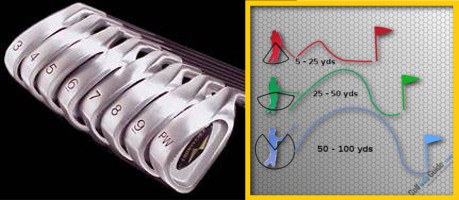
Underclubbing in Golf
Golf is a game of strategy and precision where selecting the right club for each shot is crucial. Underclubbing is a term commonly used in golf that refers to the act of selecting a club that does not have enough loft or distance to reach the target effectively. It is a mistake that many golfers make, especially beginners, which can result in shots falling short of their intended target.
Underclubbing typically occurs when a golfer underestimates the distance to the target or fails to consider variables such as wind speed, elevation changes, or the condition of the golf course. It is important to remember that each golf club has a specific purpose and distance it can cover. When a golfer selects a club that cannot achieve the necessary distance, they are underclubbing.
Effects of Underclubbing:
Underclubbing can have several negative effects on a golfer's game:
- Short Shots: Selecting a club with insufficient distance can result in the ball falling short of the target. This leads to increased strokes and can be frustrating for the golfer.
- Difficulty in Recovery: When a shot falls short, it may position the ball in a challenging position, making it difficult to recover and achieve a good score.
- Inaccuracy: Underclubbing can also lead to inaccurate shots. When a golfer tries to compensate for a club's lack of distance, they may alter their swing leading to inconsistent shots.
- Lack of Confidence and Frustration: Repeated underclubbing instances can dent a golfer's confidence, leading to frustration and potentially affecting their overall performance.
How to Avoid Underclubbing:
Here are a few tips to help golfers avoid the mistake of underclubbing:
- Know Your Distances: Spend time on the driving range to understand the distances you can cover with each club in your bag. This will help you make accurate club selections on the golf course.
- Consider Variables: Account for factors such as wind speed, elevation changes, and the condition of the course when selecting a club. Adjust your club choice accordingly to compensate for these variables.
- Play Conservatively: Rather than risking falling short of your target, it's often better to choose a club with a little extra distance. This will provide a buffer and give you a better chance of reaching your target.
- Consult Yardage Charts: Many golf courses provide yardage charts that indicate the distance from various markers to different targets on each hole. Study these charts and use them as a reference to make informed club selections.
- Practice and Gain Experience: The more you practice and gain experience playing different courses, the better you will become at selecting the right club for each shot. Learn from your mistakes and adjust your club choices accordingly.
By understanding the concept of underclubbing and implementing the tips mentioned above, golfers can improve their club selection and minimize the negative effects of underclubbing. Remember, selecting the appropriate club plays a vital role in achieving successful shots and enhancing your overall golfing experience.





